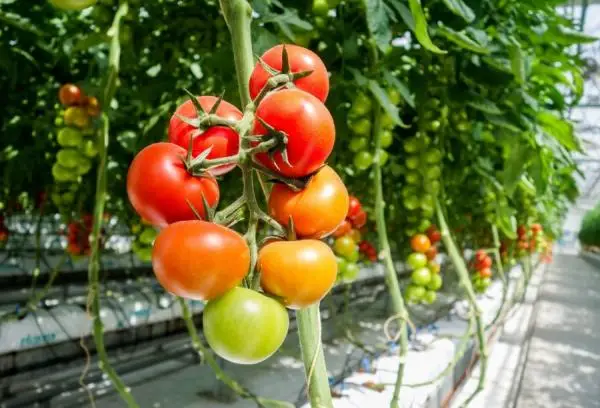Tomatoes are the most popular greenhouse crop on the planet today. And is that with the right conditions, you can get up to two annual harvests of these plants, so they provide a great production of their valued fruits.
It does not have to be large farm greenhouses, a smaller one in your garden can also provide excellent results for self-consumption. If you want to learn about growing tomatoes in the greenhouse , join us in this article.
Tomato varieties for greenhouse
There are a large number of tomato varieties that can be grown in a greenhouse. However, if you are looking for the most productive ones or the ones that can best take advantage of the conditions of a greenhouse, they are the following:
- The Caramba tomato is one of the ones with the highest production in the greenhouse. It offers some large tomatoes, it is precocious and very productive.
- Tomato 73 – 36 is another variety that offers high production, as well as large fruits. However, its foliage is very thick, so the task of harvesting is somewhat difficult.
- The Antilles tomato variety is also a very good option, since its flavor is highly valued and, although it produces smaller fruits, it is of high production and precocity.
- The Cabrales tomato also offers high productivity, although it has a disadvantage that it takes a long time to start producing.

Growing tomatoes in a greenhouse – care guide
Once you have decided on the variety to put in your covered garden, follow these tips for growing tomatoes in the greenhouse :
Temperature for growing tomato in greenhouse
The first thing when growing tomatoes in a covered garden is to control the temperature, which should be kept between 21ºC and 27ºC during the daytime, and between 16ºC and 18ºC at night. In addition to maintaining these temperatures in your greenhouse during all the months that you are going to maintain the tomato crop, it will be necessary to keep the humidity below 90%, in addition to ensuring that the environment is ventilated and with fresh air. Otherwise, you are likely to find mold problems on the leaves of your tomatoes.
Substratum
For the substrate or soil, it is necessary that the mixture you use has good drainage. If you make your own mix, don’t use unsterilized garden soil.
Irrigation of tomato in greenhouse
It is highly recommended that you have a drip irrigation system in the greenhouse, so that each plant receives its measured and necessary dose of water. If you have hydroponics in mind, it is also a very good option for this plant.
Germinate tomatoes for greenhouse
Ideally, you should germinate the seeds in a seedbed before taking them to the greenhouse, keeping them controlled and in adequate light and irrigation conditions. Two weeks after they have germinated you can transplant the seedlings into small pots and take them to the greenhouse. Once they are between 10 and 15 cm tall, it will be time to transplant them back to their final location.
Before this definitive transplant, check that the soil pH is between 5.8 and 6.8 values. In addition, it is advisable to add calcium sulfate to the soil, which will help prevent necrosis in the crop.
Tomato fertilizer and pollination
Fertilize your tomatoes regularly, remove the suckers every week leaving only the main shoot and a single shoot (the tallest one). This way the plant will grow upwards. In addition, you will need to stalk your tomatoes, and unless you have your own bees or a large number of them nearby, you will need to pollinate the flowers yourself. For this, you can help yourself with a specific electric vibrator for gardening. Do the pollination always between 10 in the morning and 2 in the afternoon every other day.

How to stalk tomatoes in a greenhouse
There are many different ways of staining tomatoes. In the greenhouse, one of the most used is the Florida fabric . To support tomatoes with rope with this technique, some structures similar to trellises are formed, which we keep up with stakes, and the ropes are tied, leaving them taut, so that the tomato plant grows by leaning on them.
It is also common to use the simple method of a stake for each tomato plant , which we will tie carefully to it as it grows, or to use tripods on which several plants can lean and which, in addition, protects them from the wind. Finally, wire cages and fences are also widely used to make trellises in the greenhouse, especially the former, since they do not require any type of mooring of the plant.
